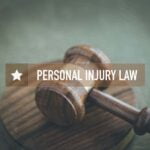Have you suffered neck and back injuries in a car accident?

Car accidents cause nearly 40% of all spinal injuries and a massive 300,000 people in the US are living with the ramifications of these injuries. Both the neck and back are often the first to get hurt when you are in an accident. This explains why so many auto accident victims suffer with whiplash injuries.
Contrary to perception, neck and back injuries are not always a result of high speed crashes. In fact, many injuries actually occur at speeds as low as 16 mph. Given how common such injuries are, if you have recently been in an auto accident or you regularly use a car, as a passenger or driver, here is information that you absolutely need to know.
Neck and back injuries are never simple!
Almost 6,000 deaths each year result from serious cervical injuries, which occur 20% of all auto accident fatalities. Such disastrous cases are very common when it comes to personal injury lawsuits. The real trouble comes with what’s often considered mild to moderate level injuries.
They are hard to spot even with diagnostic tests but can leave you with chronic pain and lifelong debility. In fact, 40% of all auto crashes leave their victims with such injuries, and car accidents cause 220,000 such injuries each year across the country.
Unfortunately, for the victims, because there may not always be evident signs of injury such as bruising or bleeding, it is very easy to question a person’s claims of pain and discomfort.
Additionally, many of these spinal injuries, including those that affect the neck and the back, cause gradual degeneration of the spine and the vertebrae and chronic inflammation to the muscles that surround the spine. Is it any wonder then that even the simplest of neck injuries require an average of nearly six months of some form of medical attention?
Accidents that are most likely to cause neck and back injuries
- Rear end injuries, even those that occur at low speeds, are most frequently implicated in whiplash and other soft tissue damage, both in the lower and upper back and the neck.
- At high speeds, such accidents frequently cause severe head injuries, as well as fractures of the cervical (neck) vertebrae.
- Pedestrians and bicyclists involved in auto accidents have the highest risk of suffering from neck fractures.
- Front end impact collisions frequently cause ligament rupture, annulus fiber tears, facet fractures, disc herniation and severe head injuries.
- Multi-plane ligament injuries are the most common in side impact collisions along with serious brain injuries in case of high speed crashes.
- Multi vehicle accidents are among the most common causes of spinal cord injuries.
- Spinal fractures are most frequently caused in car roll-over accidents.
- Thoracic spine injuries often occur in high speed t-bone/broadside crashes.
- Paraplegia and quadriplegia are often caused by auto accidents in which vehicles crash into motorcyclists, pedestrians and bicyclists. These serious injuries are also common in accidents where the motorists are propelled out of the vehicle.
The intensity and direction of impact, the position of the victim in the vehicle (whether driver or front/rear passenger), use of safety restraints and availability of other safety measures such as air bags and their deployment as well as the height, weight and gender of the victim all make a difference in the severity of injuries suffered.
Common types of neck and back injuries suffered in accidents
When seat belts are used, typically, it is the lumbar (lower back) and the cervical spine (upper back and neck) that are the most at risk of injuries. These can include:
Whiplash: Caused due to the unnatural and excessive flexing and loading of the neck and vertebral column, whiplash injuries occur in nearly 90% of auto crashes. Despite being extremely common, they remain the most poorly diagnosed of all injuries because there are no outward signs of damage and they are extremely hard to point out even with diagnostic tests. But whiplash injuries can trigger degenerative issues of the spine and eventually lead to disc herniation if not tackled in time.
Herniated disc: Think of the disc as a fluid filled soft structure that is placed in between the vertebrae to absorb shocks and to stop the bones from grinding against each other. Because of the forces exerted on the spine in a crash, this disc can move out of its position or even get ruptured. In both instances, it will cause irritation to the spine, leading to pain and numbness.
Vertebral fractures: Fractures of the vertebrae can have different symptoms depending on the location of the damage. However, intense pain, numbness, significant mobility issues and paralysis or loss of bladder/bowel movement are among the most tell-tale signs of such injuries.
Spinal cord injury: Of all back and neck injuries, these are the most serious. In fact, most other injuries will eventually lead to spinal damage if not controlled/treated when and how they should be. Spinal injuries can cause partial or complete paralysis, life threatening breathing problems and death.
Tearing of ligaments and annular fibers: Both of these can cause intense and debilitating pain, tingling, numbness and loss of strength in the hands and legs. Although these injuries are treatable if not severe, they take a long time to heal and often don’t heal completely or leave chronic symptoms.
Facet joint injury: These joints make the movement of the spine possible and restricts the ability of the vertebrae to move past their limit. The soft membrane surrounding these joints offer lubrication for the safe and comfortable movement of the vertebral column. Any injury to these joints causes intense pain, mobility issues, numbness and tingling.
Delayed symptoms that you should not ignore!
The problem with neck and back injuries, particularly the mild to moderate kind, is that their symptoms may take some time to show up. However, just because they have a delayed onset does not mean that the symptoms don’t turn chronic.
The biggest problem is that because these symptoms are also linked to other health issues, it is easy to mistake a neck/back injury for other problems. Keep an eye out for the onset, as well as the worsening, of the symptoms listed below.
- Dizziness.
- Headaches.
- Pain in the neck, shoulders, the back or the waist.
- Radiating pain that starts in the back and spreads to the limbs.
- Muscle stiffness in the neck, shoulders and back.
- Numbness and tingling that spreads to hands and legs.
- Progressive muscle weakness and loss of strength in the hands and legs.
- Tinnitus (ringing in the ears).
- Burning sensation in the neck and the back.
- Gradual urinary incontinence.
- Memory problems.
- Inability to concentrate.
- Discomfort after walking or when standing.
- Numbness and muscle weakness on one side of the body.
- Insomnia or poor sleep quality.
- Vision problems.
- Abdominal discomfort.
- Depression and anxiety.
If you experience any of these symptoms, promptly seek medical attention. The doctor is likely to recommend diagnostic imaging tests. You should get these done and maintain all paperwork and reports of the consultation and the tests.
Are you eligible for compensation?
Yes, you may be entitled to compensation if you suffered these injuries due to the negligence of another person. But you only get 2 years to file your claim. Also, you can expect the insurance company to actively work to prove your claim is false or exaggerated. However, if you have suffered of this kind, you are entitled to seek compensation for:
- Medical bills.
- Lost wages.
- Chronic or long term physical impact of the injuries.
- Pain and suffering.
- Mental anguish.
- Relationship and family issues caused by the impact of the injuries.
Because the symptoms of neck and back injuries can manifest several days later, it is crucial not to rush into settle your claim. In fact, if you haven’t already filed your claim or if you have started receiving calls from insurance adjusters in response to your claim, it is vital that you get in touch with us right away.
The experienced and skilled attorneys at DeVaughn James have helped hundreds of clients to get their rightful compensation. Our lawyers know what it takes to aggressively pursue car crash cases and to build the value of your claim through documenting your injuries and the future medical expenses that you may have to incur.
Contact us today and our attorneys will make sure that you do not have to settle for a fraction of your rightful restitution. We firmly believe that fair compensation is the right of every accident victim. We make sure that insurance companies do not trample on your rights to fair compensation.








